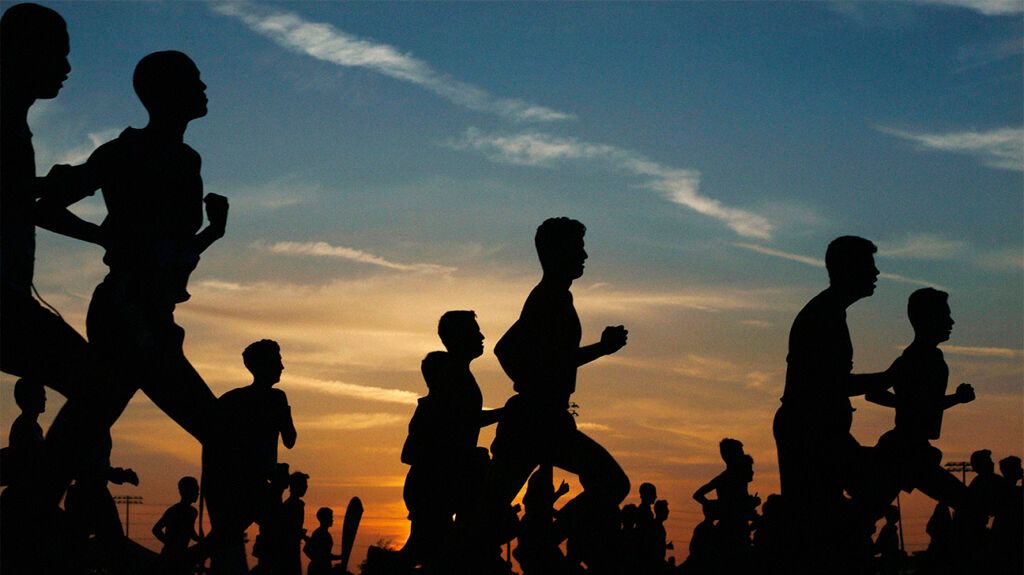
- Obesity increases a person’s risk for several medical conditions including type 2 diabetes, cardiovascular disease, and certain types of cancer.
- Scientists have been trying to determine what time of day is best to aid weight loss in people with obesity.
- Researchers at the University of Sydney have found that getting the majority of daily physical activity during the evening offers the most health benefits for people who have obesity.
A new study from researchers at the University of Sydney in Australia, published in the journal Diabetes Care, suggests that getting the majority of daily physical activity during the evening offers the most health benefits for people who have obesity.
A recent study reports that
“Approximately two in three Australians have excess weight or obesity, which is a significant risk factor for many chronic illnesses such as
“One of the key drivers of obesity-related complications is insulin resistance — a condition which eventually leads to high blood glucose levels and type 2 diabetes. Having high blood glucose levels can cause catastrophic damage to our cardiovascular system and lead to organ failure,” Sabag said.
For this study, Sabag and his team analyzed data from the U.K. Biobank of almost 30,000 people over the age of 40. All participants were considered to have obesity and about 3,000 had type 2 diabetes.
Researchers also had access to wearable device data from all participants which monitored their physical activity levels in the morning, afternoon, and evening, over about eight years.
At the study’s end, scientists found that people who performed most of their aerobic
Both moderate and vigorous physical activity raises a person’s heart and breathing rates. Examples of moderate physical activity include:
- brisk walking
- dancing
- mowing the lawn
- lifting weights
- swimming
Types of vigorous physical activity include:
- jogging/running
- hiking
- shoveling
- aerobics
- playing soccer or basketball
Sabag said he and his research team believe their results may be partly explained by the improved
“Our body is most insulin resistant at night and for those who cannot produce more insulin to compensate — like some of the people included in our study — undertaking physical activity at this time may be offsetting some of the natural night-time insulin resistance,” he explained.
“Furthermore, recent findings from a smaller clinical study showed that exercising later in the day led to greater improvements in blood pressure, which is a significant risk factor for premature death and cardiovascular disease,” Sabag continued.
“Together, these theories provide some insight into what may be occurring, but further research is required to gain a more comprehensive understanding of such processes,” he added.
Study participant physical tracking did not include just structured exercise — it focused on tracking any type of continuous aerobic moderate to vigorous physical activity in spurts of three minutes or more.
The researchers also discovered that the frequency in which participants performed moderate to vigorous physical activity tasks in the evening — measured in short bursts up to or more than three minutes — appeared to be more important than the full day’s physical activity total.
“Physical activity, whether undertaken as structured leisure-time exercise, or incidental physical activity such as walking up the stairs, elicits profound health benefits,” Sabag explained.
“Recent research from the Mackenzie Wearables Research Hub has shown that
“This finding seems to support the notion that doing multiple bouts of physical activity throughout the day may be more beneficial than accumulating all your physical activity in one block. This finding makes sense from a physiological perspective as repeated muscle contractions throughout the day may facilitate better blood glucose control. Having better glucose controls means less risk of cardiovascular disease, organ failure, and other associated complications.”
— Angelo Sabag, PhD, lead author
After reviewing this study, Mir Ali, MD, bariatric surgeon and medical director of MemorialCare Surgical Weight Loss Center at Orange Coast Medical Center in Fountain Valley, CA, told MNT he was surprised by the results as he has not seen other studies of this nature.
“Based on this study, it appears frequent bouts of short-interval exercise can be beneficial. So people who cannot get 30 to 60 minutes of structured exercise may be able to do shorter, more intense activity and see beneficial results,” Ali said.
MNT also spoke with Ryan Glatt, CPT, NBC-HWC, senior brain health coach and director of the FitBrain Program at Pacific Neuroscience Institute in Santa Monica, CA, who agreed.
“The emphasis on the value of short, moderate to vigorous activities in the evening, like walking upstairs or cleaning, suggests a flexible approach to meeting exercise recommendations,” Glatt said.
Based on this study, readers may wonder if they should start focusing all their physical activity in the evening hours.
Glatt said while this study introduces an interesting hypothesis that evening exercise might have unique benefits, it’s crucial to approach such findings with caution.
“The significance of exercise timing, particularly favoring the evening, should be scrutinized further before drawing definitive conclusions,” he said.
“For individuals limited to morning or afternoon workouts, there’s no immediate cause for alarm based on this study alone. The broader consensus remains that engaging in regular physical activity, regardless of the time of day, is most important for health.”
— Ryan Glatt, CPT, NBC-HWC
“Future investigations should critically assess the purported benefits of evening exercise, seeking to understand the underlying mechanisms and verify these findings across a wider range of populations. Further research is needed to substantiate the claim that the timing of physical activity significantly impacts health outcomes before revising public health advice,” Glatt added.